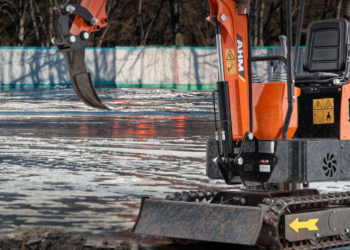Incorporating Arabic and Persian designs into an office environment can drastically transform the aesthetics & ambiance of any space. These styles are known for their intricate patterns and vibrant colors. Normally using many natural materials. Which together create a harmonious and inviting atmosphere.
Core Arabic Design Elements
Arabic design often features geometric patterns, elaborate mosaics, and calligraphy. Incorporating these elements can add a sense of order and rhythm to the office. The geometric patterns are often seen in: tiles, wall coverings, and textiles. They provide a visually stimulating environment that can inspire creativity and focus. Calligraphy, used as art pieces or integrated into design elements, can add a cultural and intellectual layer to the workspace.
Important Persian Design Elements
Persian design, known for its rich textures and detailed craftsmanship, can introduce a sense of luxury and elegance. Persian rugs, with their intricate patterns and vibrant colours, can be used to define different areas within the office, such as meeting rooms or relaxation zones. The use of arches and domes, common in Persian architecture, can be adapted into interior design through arched doorways and curved ceilings, creating a sense of grandeur and fluidity.
What Materials to Use
The materials used in Arabic and Persian designs are often natural and high-quality, which contribute to a sustainable and aesthetically pleasing office environment.
Wood is commonly used for furniture, wall panels, and decorative screens, often featuring intricate carvings.
Metal, especially brass and copper, is used for decorative items like lamps, trays, and vases. These materials not only add warmth and richness to the space but are also durable and long-lasting.
Tiles and Mosaics: Colorful ceramic tiles and mosaics are essential elements in Arabic and Persian designs. These can be used on floors, walls, and even table tops to add vibrant colour and intricate detail. The reflective quality of tiles can also enhance natural light within the office, creating a bright and airy atmosphere.
Textiles: Rich fabrics like silk, wool, and cotton are used for upholstery, curtains, and cushions. These textiles often feature detailed embroidery, vibrant colours, and traditional patterns, adding comfort and visual interest to the office.
Making your workspace better
Integrating Arabic and Persian designs into an office can go beyond aesthetics to provide functional workplace solutions.
Starting with Flexible Spaces. Arabic and Persian designs often emphasize modular and flexible spaces. Using movable screens and partitions with intricate designs can help create adaptable work areas that can be easily reconfigured for different tasks or team sizes. This flexibility supports a dynamic and collaborative work environment.
Traditional designs can be combined with modern ergonomic principles to create furniture that is both beautiful and comfortable. For example, desks and chairs can feature intricate woodwork while providing proper support and adjustability for users.
Room Acoustic: The use of thick textiles, carpets, and wall hangings can help improve acoustics by reducing noise levels and echo, creating a more focused and comfortable work environment. Additionally, incorporating water features, inspired by Persian gardens, can provide calming ambient noise and enhance the overall ambiance.
Learning from Warmer Climates
With the growing concern of global warming, looking to architectural and design solutions from warmer climates can offer valuable insights.
Passive Cooling: Arabic and Persian architecture often employs passive cooling techniques, such as high ceilings, courtyards, and wind towers. These elements can be adapted to modern office design to improve natural ventilation and reduce the reliance on air conditioning, thereby lowering energy consumption.
Sustainable Materials: The use of local and natural materials, common in traditional Arabic and Persian designs, aligns with sustainable building practices. Materials like clay, stone, and natural fibers have lower environmental impacts and provide better insulation, contributing to a more sustainable office environment.
Biophilic Design: Inspired by Persian gardens, integrating elements of nature within the office can enhance well-being and productivity. Indoor plants, water features, and natural light not only improve air quality but also create a more pleasant and stimulating work environment.
In recent years, the rise of online gambling communities has been significant, with platforms like 카지노커뮤니티폰 emerging as popular hubs for enthusiasts. These communities offer a wealth of information, including game strategies, reviews of various casinos, and tips for maximizing winnings. The convenience of accessing such resources via mobile phones has revolutionized the way players engage with online gambling, making it easier than ever to stay informed and connected.
In Conclusion
Incorporating Arabic and Persian designs into an office environment can significantly enhance both its aesthetics and functionality. The use of natural materials, intricate patterns, and thoughtful design elements can create a workspace that is beautiful, comfortable, and sustainable. By drawing inspiration from the architectural wisdom of warmer climates, modern offices can adopt passive cooling techniques and sustainable practices, contributing to a more environmentally friendly and enjoyable workplace. This blend of traditional design and modern workplace solutions offers a unique and effective approach to creating a harmonious and productive office environment.







